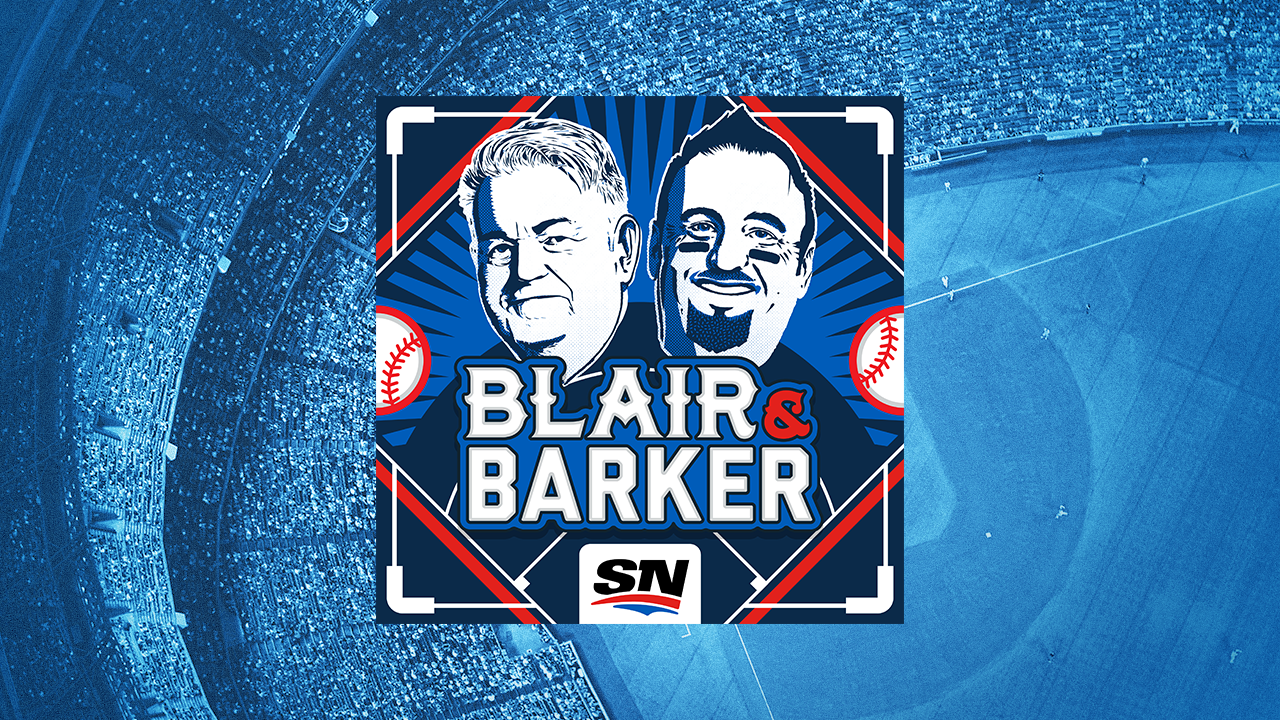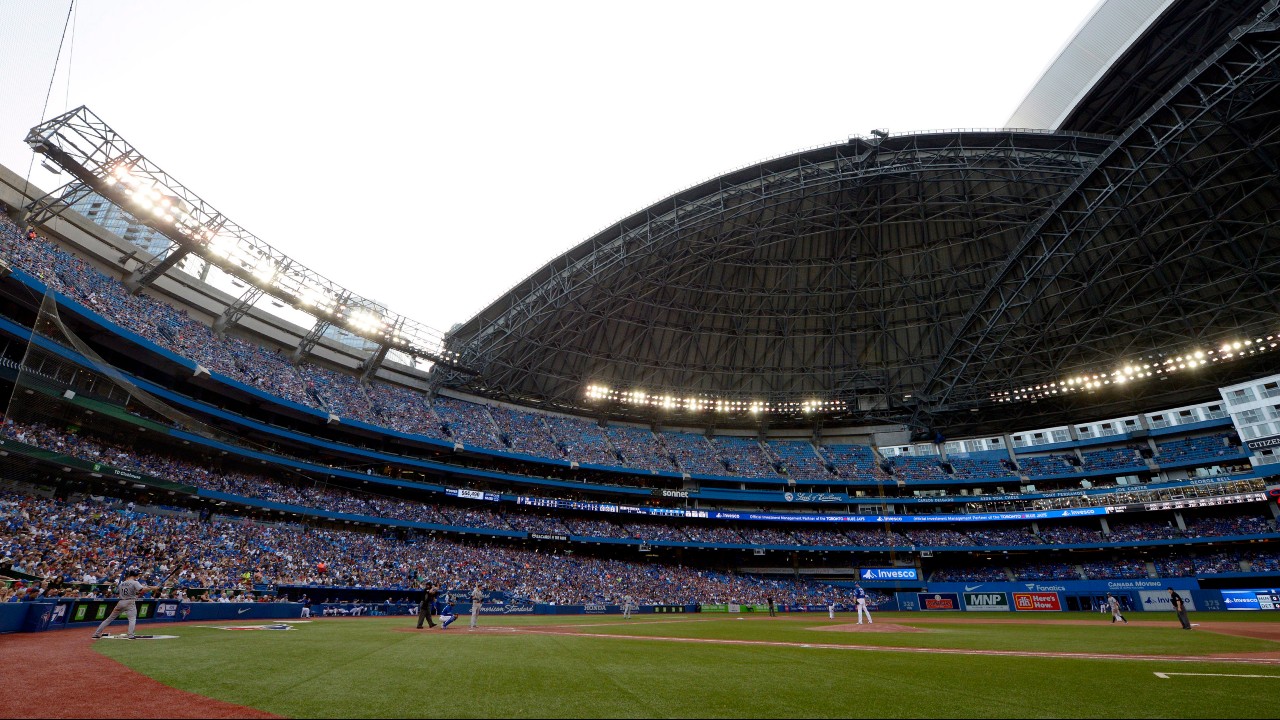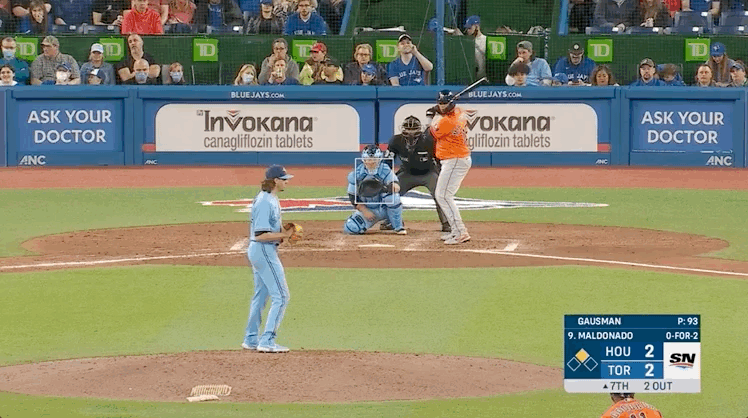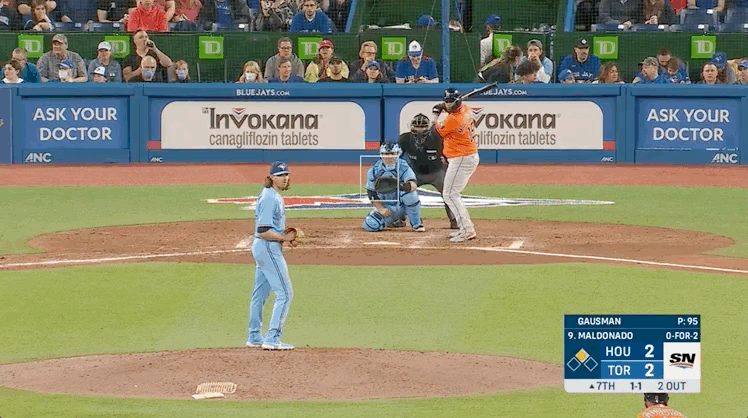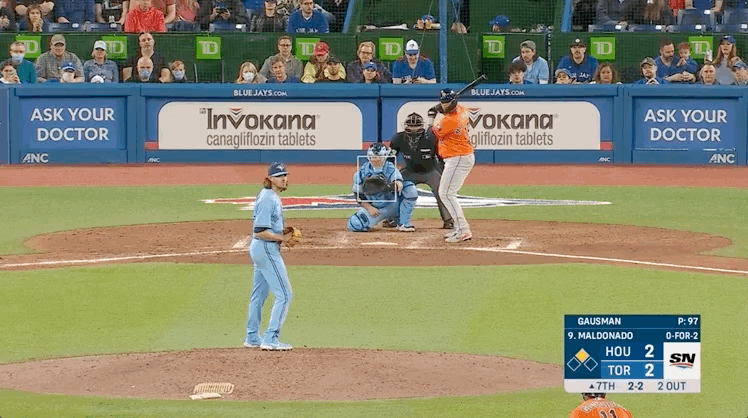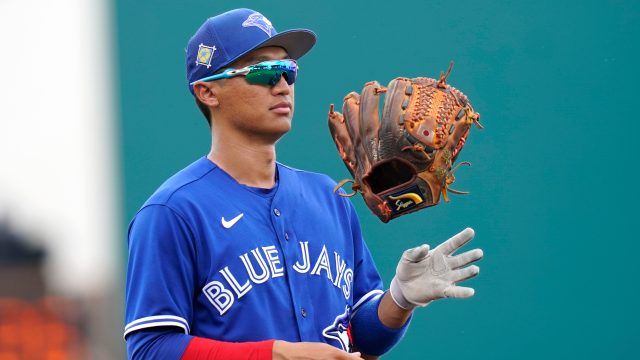
CLEVELAND — We shouldn’t — we can’t, we won’t — go on comparing Kevin Gausman to Robbie Ray forever.
They’re unique individuals. They have different strengths, weaknesses, methods, demeanours. They’ve both had impressive MLB careers and will likely continue to. If comparison is the thief of joy, baseball analysis is a freezer malfunction at the ice cream parlour on a summer Saturday. A dog on a leash at the beach. A loveless marriage. You get the picture.
But we have a month’s worth of returns from the 2022 MLB season now; a half-dozen outings each from these two excellent starters who signed incredibly similar free agent deals — five years, $110-million for Gausman; five years, $115-million for Ray — within 24 hours of one another over the winter. It’s a logical juncture.
So, we’re doing it. We’re diving in. Not that anyone needs anything more than the eye test to tell them that, in signing Gausman and letting Ray go to the Seattle Mariners, the Toronto Blue Jays haven’t only replaced a Cy Young winner in their rotation — they’ve upgraded on him.
Who could deny it? Not after Ray allowed four runs over 6.2 innings Thursday at home against the Tampa Bay Rays — a team he dominated last season, putting up a 2.33 ERA over a half-dozen 2021 starts — to raise his ERA to 4.38. And certainly not after Gausman sustained one of MLB’s best early-season runs Saturday in Cleveland, holding the Guardians to a run on six hits and — gasp! — a walk over 6.1 innings in an 8-3 Blue Jays victory.

Gausman’s latest stellar outing lowered his ERA to 2.13 over his first 38 innings in Blue Jays colours, and his FIP to an absurd 0.73, tops among qualified MLB starters. He’s already posted over two fWAR less than a fifth of the way through the year, putting Gausman on pace to challenge Roger Clemens for the best single-season fWAR — Clemens posted 10.7 in 1997 and 8.2 in 1998 — in franchise history.
Really, considering the standard Gausman’s set for himself over the last month, Saturday’s performance qualifies as underwhelming. He had the audacity to walk Franmil Reyes on four-pitches at one point, issuing his first free pass and second 3-0 count of the season. He mustered only 10 swinging strikes, a far cry from his previous season-low of 16. He touched 97 with his fastball only once, something he did seven times in each of his last two outings.
So, gee, a real tough day for Gausman. Maybe it was the cold, breezy conditions. Maybe he just didn’t quite have it. God help the hitters who face him when he does.
Look, it’s only a half-dozen outings from these two. It’s baseball — no one knows what’ll happen tomorrow, let alone over the next five years. But it’s really something else to look at the starts Gausman and Ray have had in their new locales and remember it wasn’t so long ago that many Blue Jays observers were lamenting the loss of a Cy Young winner’s production, and wondering if the guy they remembered getting lit up with the Baltimore Orioles eons ago could possibly come close to replicating it.
Replicating it? How about overwhelming it. Crushing it. How about an ERA nearly three-quarters of a run lower than the one that put a trophy on Ray’s mantle. And 2022 numbers that aren’t in the same neighbourhood, city, or province, let alone the same ballpark.
Strength of schedule matters, too. Gausman’s done what he’s done against the Texas Rangers, New York Yankees, Boston Red Sox (twice), Houston Astros, and now the Guardians. The Rangers aren’t great, and Boston’s offence is off to a puzzlingly poor start. But the Yankees and Astros are among the class of the AL. And the Guardians entered Saturday fifth across MLB with a 114 wRC+.
Ray, meanwhile, has pitched against the Minnesota Twins, Chicago White Sox, Rangers, Kansas City Royals, and Miami Marlins. The Rangers still aren’t great; the Royals have been baseball’s second-worst offence; the White Sox have scuffled, scoring just 3.32 runs per game; the Marlins are middle-of-the-pack. It isn’t a lopsided difference — but Ray’s road has been easier.
Of course, Ray hasn’t been a let-down with the Mariners. His season’s probably best described as uneven. He hasn’t been the helter-skelter 2020 version of himself that walked a batter an inning and was traded to Toronto for an edge-of-roster reliever. But he hasn’t been the fire-breathing 2021 version of himself, either.
He’s merely been serviceable. That 4.38 ERA is dragged upwards by a rough, six-run outing his second time out, in which Ray allowed three homers. He’s coughed up only one in four starts since, doing a much better job of contact management while getting most of his outs through the air.
But that last bit’s a little strange, isn’t it? Outs through the air? This is the guy who last season took hold of the all-time MLB record in K/9 — 11.1 — among pitchers to throw at least 1,000 innings. His electric fastball-slider mix has been borderline unhittable when it’s on. What happened?
Well, his strikeout rate’s plummeted 12 points year-over-year; his swinging strike percentage, three-and-a-half. He’s working on the plate more than ever, a promising signal for a guy whose ability to pitch deep into games was oft sabotaged by walks earlier in his career. But his stuff’s getting hit as much as ever, too, which is showing up in a contact percentage seven points higher than last season’s.
Ray’s still avoiding barrels at an above-average rate, which is good for his short-term results. But hitters are putting his pitches in play more consistently, and at the same elevated average exit velocity he’s allowed throughout his career, which could be bad in the long run.
Ray simply hasn’t had his premium stuff. The average velocity on both his fastball and slider are down two ticks. He’s getting less chase outside the zone and far fewer whiffs in general. It could be a shortened-spring, early-season, cold-and-wet-of-Seattle thing. He might find that extra juice again as the weather warms. Or he might be a maximum-effort thrower on the wrong side of 30 coming off a season in which he led the AL in innings pitched. Throwing that hard, that effortfully, that often is tough to sustain.
And while Ray’s underlying numbers have trended down, Gausman’s arrows are all pointing up. At 31 and coming off a Cy Young contending season, he’s found a way to get even better. His splitter’s been a tick harder than last season; he’s locating his fastball on the plate more than ever before; he’s getting career-high chase rates with all of his off-speed pitches.
The horizontal movement on his fastball, splitter, and changeup have all increased several inches, making them that much more difficult to square up. And Gausman’s slider’s been a revelation. He’s using it far more often this season, sweeping it away from right-handed hitters out of the same arm slot as his fastball and splitter. When he’s repeating his delivery and tunneling effectively, it gives Gausman three pitches that look the same out of his hand but move in different directions as they near the plate at varying rates of speed.
Gausman showed Martin Maldonado exactly what that looks like his last time out. He started the Astros catcher with a wicked slider that missed:
A pitch later, he got Maldonado to swing over a splitter right at the bottom of the zone:
And a pitch after that, Gausman sent Maldonado to hell with elevated, 97-mph cheese:
Here’s how it looks when you overlay all three of those pitches:
Good luck with that. And keep in mind, Maldonado was the final hitter Gausman faced on the day. It was the seventh inning, Gausman was up over 95 pitches, and Maldonado had already seen him twice. If that’s how it looks when Gausman’s pitching fatigued late in an outing, imagine what it’s like to contend with in the first, second, and third innings.
And considering the Guardians could only muster six singles, a walk, and a run against a not-quite-his-best Gausman Saturday, imagine what could happen one of these afternoons when he’s really feeling it.
Look, comparison’s the thief of joy. Ray and Gausman are individuals; we ought to only compare them against themselves. But it’s worth noting that these first six outings are why the Blue Jays felt perfectly fine letting Ray walk this winter, spending their money instead on the pitcher they’d tried and failed to acquire the two off-seasons prior. They didn’t view Gausman as replacing a Cy Young winner. They saw him as an upgrade.


